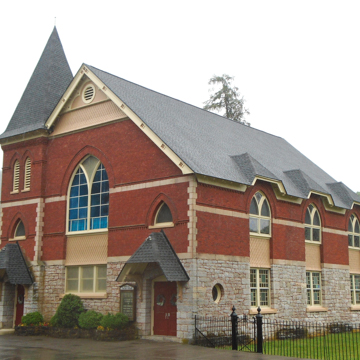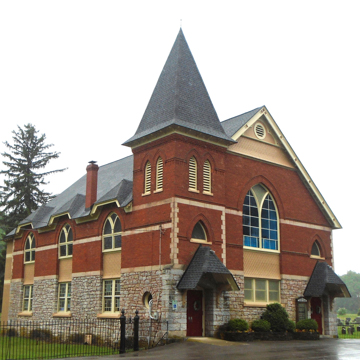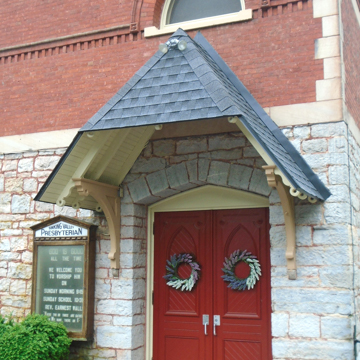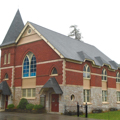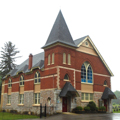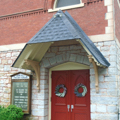You are here
Sinking Valley Presbyterian Church (Arch Spring Presbyterian Church)
In a relatively isolated place like Sinking Valley in the 1870s, a pattern-book church was usual for most congregations. The squat proportions of the corner tower, its flared roofline, and the jerkinhead dormers on the side elevations and over the entrances on the facade all indicate self-assurance and the builder's willingness to tweak the expected forms. The church's first level is irregularly laid stone interrupted by paired Queen Anne windows and two portholes on the side walls. The upper story is red brick, and its windows are Gothic arched. The ornamental woodwork includes carved brackets below the eaves and diamond-patterned shingling on the gable end of the rear elevation. Classrooms on the first story and a second-story sanctuary seating three hundred are traditional for the period. The second-story sanctuary symbolizes the biblical Upper Room where Christ and the apostles held the Last Supper. The Arch Spring Cemetery surrounds the church on three sides.
Writing Credits
If SAH Archipedia has been useful to you, please consider supporting it.
SAH Archipedia tells the story of the United States through its buildings, landscapes, and cities. This freely available resource empowers the public with authoritative knowledge that deepens their understanding and appreciation of the built environment. But the Society of Architectural Historians, which created SAH Archipedia with University of Virginia Press, needs your support to maintain the high-caliber research, writing, photography, cartography, editing, design, and programming that make SAH Archipedia a trusted online resource available to all who value the history of place, heritage tourism, and learning.















